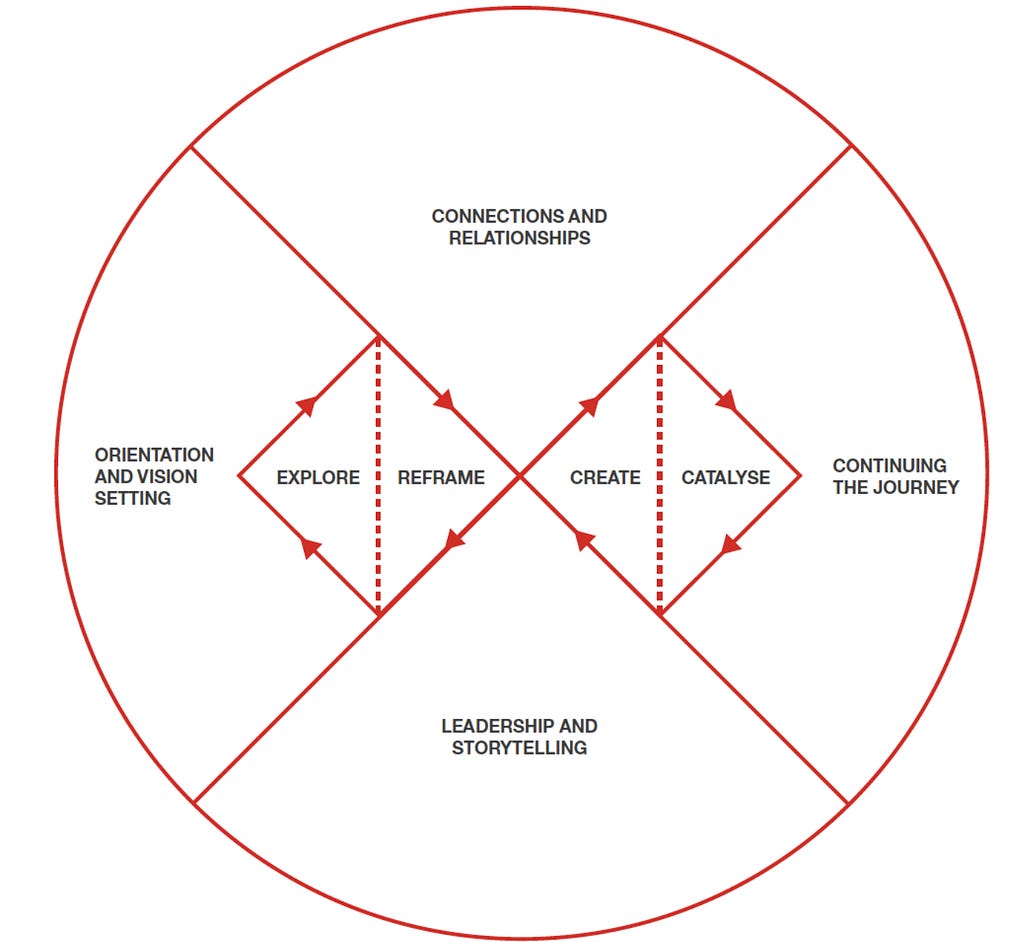
Rethinking Design Thinking: My Shift in Perspective
Hello! I’m reflecting on my understanding of Design Thinking and how it’s evolved over my career. I’ve come to see Design Thinking as more than a tool — it’s an evolving approach shaped by experience.
Note: This isn’t about validating or changing the approach but sharing my insights that may help others adopting it.
My first encounter with Design Thinking
Design Thinking, often associated with the Double Diamond, intrigued me early in my career. I admired its structured approach to research and its ability to engage stakeholders.
As I practiced, I noticed gaps not depicted in the diagram. So, I explored further and stumbled upon a diagram by the Design Council that resonated with me.

Key learnings
Reflecting on this framework, here are four key reflections from my journey that might help others better adopt this approach:
1) Onboarding and aligning each member of the team
Start by aligning team members’ goals and skills to empathise better and support each other.
If you are a team leader or a team member, you should all gather to set the team up for success and establish common work practices before even starting the project.
For example, it is necessary to understand the project team's strengths and goals, what will better support them during the project, etc.
2) It is not a linear process. Take a step back!
You will be thinking, “Duh! Of course, I know about it,” but when you are the one doing it, sometimes you forget and fall into the rabbit hole.
There will be many going back and forth from one iteration to another. Sometimes, we will have to abandon what we have done so far, dive back into our problem space, and look back at our previous research. For example;
1) Are we still in alignment with the problem space?
2) Is there anything we miss out on along the way?
My take on the importance of this process is to take a step back! For example, you could take a break from whatever you are doing, or you could find someone not working on this project to provide a pair of fresh eyes to look at your process. These might help you see the blind spot you have missed and inspire you with new ideas.
3) Building positive relationships with stakeholders
Positive relationships with your client, the point of contact, and your users are crucial. It would be easier for you to understand the underlying working processes, objectives, and needs they are looking at. So don’t think that it is not essential.
This will help you ideate or present your ideas to them effectively. They will be on your side, and getting their understanding and agreement on the directions that the team would like to pursue will be much easier because this will help make the decision-making faster and more efficient.
4) Shifting of priorities during the process
If you think the objectives you or your team set at the start of the project will stay the same. YOU ARE WRONG! By right, there should not be any changes. Still, certain circumstances, e.g. COVID-19, might expedite your plans in a certain direction, leading the team or client to reprioritise what is important for the project.
Personally, nobody will tell you, or this might not be within your control. So, keep an open mind and constantly remind yourself about the end goal the team would like to achieve at the end of the day and stay as close as possible.
Summary
As you implement Design Thinking, consider these principles to help navigate the process with your team.
- Start by aligning team members’ goals and skills to support each other better.
- It’s easy to get lost in iterations. Taking breaks and seeking fresh perspectives can reveal blind spots and inspire new ideas.
- Positive relationships with clients and users facilitate effective ideation and decision-making.
- Objectives may change due to unforeseen circumstances like COVID-19. Stay open-minded and focused on the end goal.
While I believe in the effectiveness of Design Thinking, these insights offer a deeper understanding. I hope they help you in navigating the process.
I welcome your thoughts and suggestions for improvement.
Rethinking Design Thinking: My Shift in Perspective was originally published in Government Digital Products, Singapore on Medium, where people are continuing the conversation by highlighting and responding to this story.
